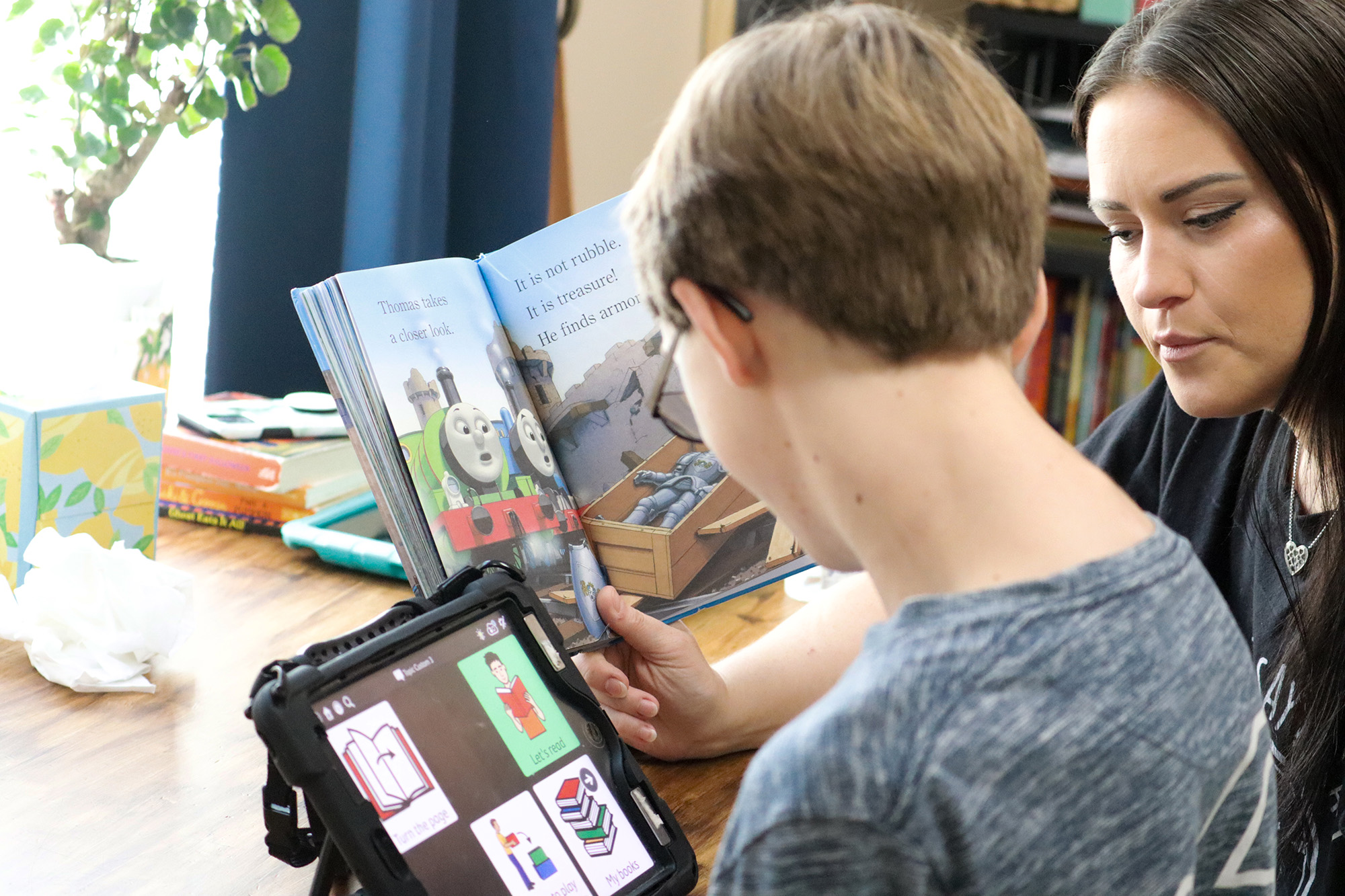Kristin Acree, MS CCC-SLP
June 12, 2025
As speech-language pathologists, supporting literacy and emergent writing for AAC users is a fundamental part of promoting functional communication. When working with students with cortical visual impairment (CVI) or other visual impairments, this task requires thoughtful adaptation and interdisciplinary collaboration. By teaming with teachers of the visually impaired (TVIs), SLPs can ensure that communication and literacy instruction is visually accessible and individualized to support each learner's needs.
Collaboration with the TVI: Start with Vision
The first step in supporting literacy for AAC users with visual impairments is to consult with the student's TVI. A TVI can provide critical insight into the student’s CVI range or specific visual needs, including color preferences, contrast, field preferences, latency, and complexity tolerance. These insights help determine ideal visual settings for the AAC keyboard interface, such as:
• Font size and style
• Background and foreground contrast
• Letter spacing and layout (e.g., QWERTY vs. alphabetical vs. customized arrays)
Customizing the Keyboard: Less is More
Emergent writers with CVI may be easily overwhelmed by a full keyboard display. One strategy is to hide most of the letters and reveal only a select group that aligns with the student's visual profile and learning targets.
For example, if the focus is on initial sounds related to motivating daily activities, the keyboard might display "B" to talk about playing with a ball and "N" to talk about learning numbers. This reduces visual clutter and increases the likelihood that the student will engage and visually locate their target.
Outside of structured, targeted activities, all letters should be unhidden to allow the student full access to the keyboard. This promotes exploration, supports emergent inventive spelling, and enables spontaneous communication attempts.
Planning for Meaningful Message Construction
While letters are limited, the communication partner should be prepared to honor any selection the student makes. For instance, if a student selects "B," the partner can model expanding beyond the initial phoneme, suggesting a possible word like "ball.” From there, letters can be unhidden to complete the spelling while verbally narrating the process. This honors the student's attempt at inventive spelling and builds early print awareness.
Save and Share
After co-constructing a message, save it on the device and create a natural opportunity for the student to share it with others. This step reinforces communication purpose, increases motivation, and validates the student's emergent writing efforts.
Key Takeaways for SLPs:
• Always begin with a consultation with the TVI to ensure visual accessibility.
• Reduce visual complexity on AAC keyboards by hiding non-target letters.
• Unhide all letters outside of structured tasks to support exploration and spontaneous communication.
• Have a flexible plan for supporting emergent spelling and honoring all attempts.
• Use partner strategies like modeling, verbal narration, and selective un-hiding.
• Save and share messages to support literacy and social engagement.
By combining the principles of emergent literacy with strong visual accessibility practices, SLPs can help ensure that all AAC users, including those with CVI, have meaningful and motivating opportunities to explore print and develop written expression.
















